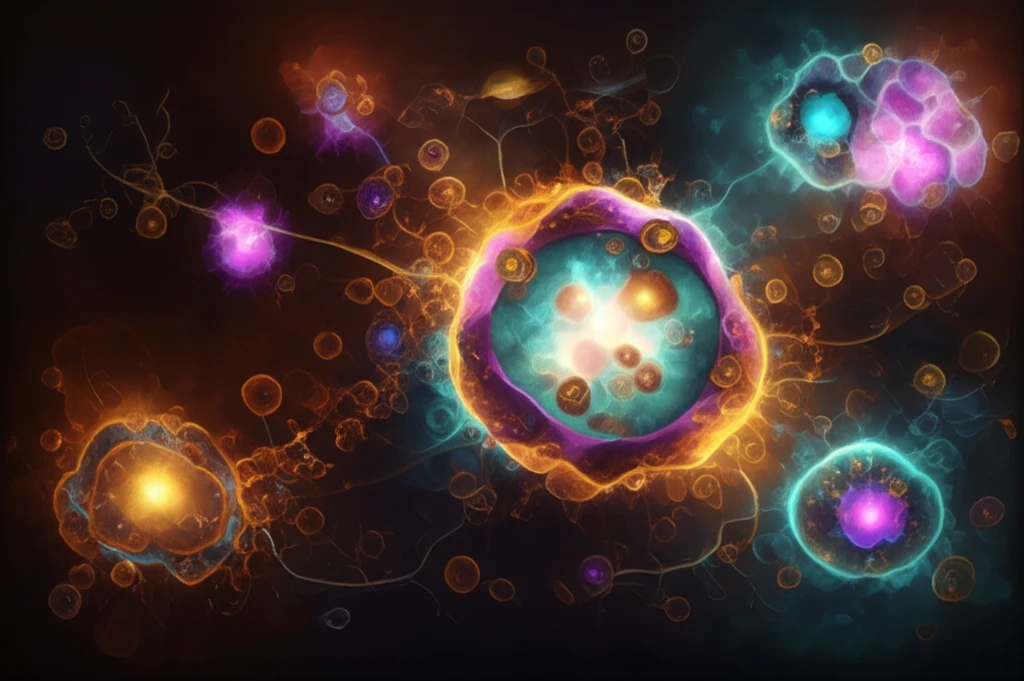
Unlocking the Invisible: How Super-Resolution Imaging is Changing Our World
"Explore the groundbreaking techniques that are shattering the limits of traditional microscopy and revealing details never before seen with Super-Resolution Imaging."
For decades, optical microscopes were bound by a seemingly unbreakable barrier: the diffraction limit of light. This meant that details smaller than about 200 nanometers – roughly half the wavelength of visible light – were impossible to resolve. Imagine trying to understand the intricate workings of a cell, the structure of a new material, or the defects in a semiconductor, all while being limited by blurry vision. That's where super-resolution imaging comes in, offering a set of revolutionary techniques to bypass this limit and reveal the hidden world at the nanoscale.
The field of super-resolution microscopy has exploded in recent years, driven by innovations in optics, chemistry, and computational algorithms. These techniques cleverly manipulate light and matter to capture information beyond the diffraction limit. Imagine a blurry photograph suddenly snapping into sharp focus, revealing details you never knew existed. This is the power of super-resolution, and it's transforming how we see and understand the world around us. The Nobel Prize in Chemistry 2014 was awarded to Eric Betzig, Stefan W. Hell and William E. Moerner for the development of super-resolved fluorescence microscopy.
This article introduces you to the exciting world of super-resolution imaging, explaining the basic principles behind these techniques and highlighting their diverse applications. Whether you're a student, a researcher, or simply curious about the latest scientific breakthroughs, this is your guide to understanding how we're making the invisible visible.
Breaking the Barriers: Super-Resolution Techniques Explained

Super-resolution imaging encompasses a variety of methods, each with its own strengths and applications. Here are a few of the most prominent:
- Structured Illumination Microscopy (SIM): SIM projects patterned light onto a sample and captures multiple images. By analyzing how these patterns interact with the sample, researchers can reconstruct an image with twice the resolution of conventional microscopy. Think of it as shining different patterns of light to gather more information about the object.
- Single Molecule Microscopy (SMM): SMM techniques, such as Photoactivated Localization Microscopy (PALM) and Stochastic Optical Reconstruction Microscopy (STORM), rely on the precise localization of individual fluorescent molecules. By imaging only a sparse subset of molecules at a time and then combining their locations, these methods achieve nanometer-scale resolution. It's like creating a pointillist painting, where each dot (molecule) contributes to the overall image.
- Ptychography: Ptychography is a computational imaging technique that involves overlapping multiple diffraction patterns to reconstruct an image. It is often applied to optical microscopy and X-ray imaging systems.
The Future is Clear: Super-Resolution's Expanding Impact
Super-resolution imaging is no longer a niche technique; it's becoming an essential tool across diverse fields. From drug discovery to materials science, this technology is empowering researchers to explore the nanoscale world with unprecedented clarity. As these techniques continue to evolve, we can expect even more groundbreaking discoveries and innovations that will shape the future of science and technology.
